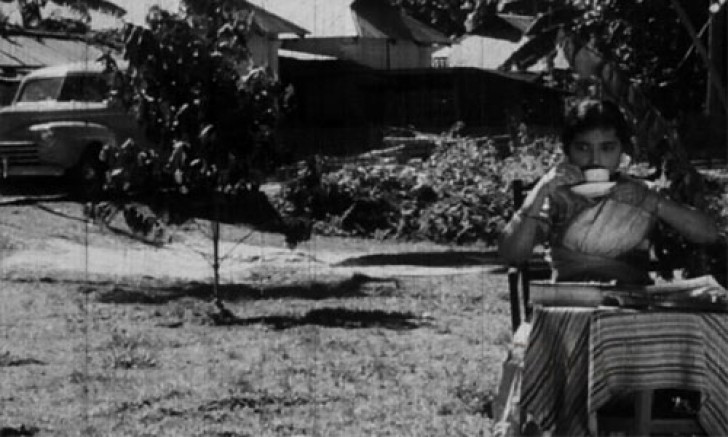Runumi (1952)
This is a collection of articles archived for the excellence of their content. Readers will be able to edit existing articles and post new articles directly |
Contents |
Runumi (1952): restoration of a film once considered lost
By P. Dewan, with materials from
Suresh Chandra Goswami, an exponent of Xatriya dance
Suresh Chandra Goswami was a writer and an exponent of Xatriya/ Sattriya dance.
Together with Jibeswar Goswami, he founded the Prachin Kamrupi Nrittya Sangha (lit: the dance union of ancient Assam) in Shillong in the 1930s, so that non-Assamese people could learn about and savour this dance form.
Runumi, the film
"Runumi" (1952/ wr. and dir Suresh Chandra Goswami) was the ninth feature film made in Assamese and the second Assamese film, after Joymoti, to be shot on location and ‘open floor.’
Suresh Chandra Goswami received an education in the essentials of filmmaking by watching pioneer Jyotiprasad Agarwalla make his films.
The cast
Kanaklata Saikia, Neyimuddin Ahmed, Suresh Goswami, Indreshwar Barthakur and Hironmoyee Devi played the main roles.
The evolution of the story
Runumi was based on Suresh Chandra Goswami’s own widely acclaimed and commercially triumphant stage adaptation of Henrik Isben's play "The Warriors of Helgeland." It was set in Assam and Nagaland (which then was the Naga Hills district of Assam).
Music
Darpa Nath Sarma composed the songs. (Sarma’s son Jitu went on to form the hugely successful composer duo called Jitu-Tapan.) The film’s hit songs were sung by Ivy Baruah, Sewali Devi/ Sarma, Swarna Devi and Prafulla Baruah.
Cinematography
Goswami got cinematographer Paresh Sarkar of Calcutta to shoot the film, but he did not like what he saw. He then engaged Nalin Duarah, whose first feature film this was, to shoot a substantial portion of the film all over again. Duarah went on to become one of Assam’s leading cinematographers.
A ban, and financial ruin
Runumi was released with considerable commercial success in upper Assam. Almost immediately thereafter, before it had recovered costs, leave alone having made a profit, it was banned, for unknown reasons (‘agyaat kaaron,’ as Goswami put it), by the State Government headed by Chief Minister Bishnu Ram Medhi.
This shattered Goswami financially. It was only three decades later that he could get himself to resume work on a screenplay, this one based on his own celebrated novel ‘Bhonga Gorha,’ which he had converted into a play called ‘Urmila.’ Goswami died in 1984 without completing the screenplay or making a film out of it.
All prints get lost
In the melee that followed, all prints of the film got lost.
Goswami’s brother-in-law, Lakshminath Borthakur of Bhir Gaon of Biswanath Chariali, took a print to screen it in the nearby tea gardens. 58 years later, in 2010, Lakshminath’s son, Amiya Borthakur, found all thirteen reels of Runumi, all in their original cans, in a tin trunk in his ancestral home. He returned them to Goswami’s daughter Dolly Borpujari, who lived in Guwahati.
The restoration
Goswami's grandson and National Award-winning film critic Utpal Borpujari contacted The National Film Archives of India. The NFAI digitally restored the audio and video tracks of the film after cleaning the print manually, all for a mere Rs 6.5 lakh ($11,000). Around 85 per cent of the film has been retrieved.
News Post/ Newslivetv adds:
The 2K scanning was done at a very slow rate, at 5/6 frames per second. Damaged frames were corrected from the adjacent frames. This project took nearly 1650 man-hours of restoration (digital).
The total number of frames that were worked upon was 1,31,061 (about 91 minutes in length) of content with 11 reels scanned and restored, out of 13 reels originally present in the title. The reels numbered "08" and "09" could not be scanned as they had deteriorated and decomposed beyond recovery."
NFAI has also done the English subtitling of the film, and has given a master DVD to Utpal Borpujari.

